Grimm MU2 music player by John Hoffman
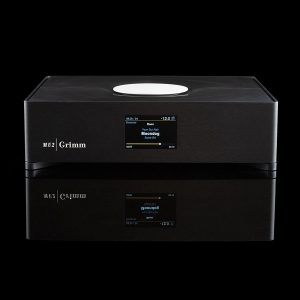
 I am a regular reader of Michael Lavorgna’s website, Twittering Machines. We have similar tastes in sound, and I find his writing informative and entertaining. He recently wrote a review of the Grimm MU2 music player wherein he boldly stated, “If you want to hear the best digital music reproduction I’ve heard by an obvious and distinct margin, you’ll need to find a Grimm MU2 to listen through.”
I am a regular reader of Michael Lavorgna’s website, Twittering Machines. We have similar tastes in sound, and I find his writing informative and entertaining. He recently wrote a review of the Grimm MU2 music player wherein he boldly stated, “If you want to hear the best digital music reproduction I’ve heard by an obvious and distinct margin, you’ll need to find a Grimm MU2 to listen through.”
When someone I respect claims this, I dig deeper. I sent the review to Mike Kay Audio Archon, a Grimm dealer, asking what he thought of the MU2. Mike said he also loves the MU2 and has been telling people how good the MU2 sounds since he received it! Now, I was intrigued. How much better could the MU2 sound than my high-end reference Reimyo 999 EX R2R DAC?
Fast forward a couple of months, and I got the MU2 in-house. As soon as the MU2 came to life, I could hear something different in the sound. Grimm states, “The MU2 reproduces micro-details so well that it allows a deep emotional connection to the musical performance.” To my ears, I am not hearing separate “micro-details” as distinct sounds; I am hearing a wholeness to the convincingly lifelike music. The micro details fill in the sound to present depth and completeness to each note, giving music the characteristic of being present in the room versus reproduced through electronics and speakers.
The MU2 has an incredibly quiet background and deep, wide, layered soundstage with stunning holographic reality. The tone and timbres are full and natural. The bass has weight and thickness while being tight and corporeal. Listening to the MU2, I was in awe of its lifelike realism. The Grimm MU2 is the purest true-to-life music reproduction from digital streaming. I fully agree with Lavorgna’s statement.
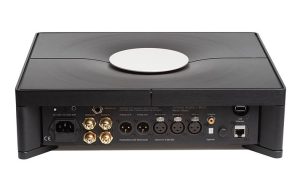
What you get inside the MU2.
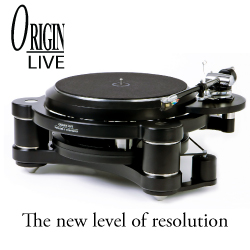 The Grimm Audio MU2 music player retails for $17,500 and includes a streamer, preamplifier, DAC, and headphone amplifier. It comes loaded with roon software required to operate the MU2 and functions as a roon core and roon endpoint (and can function as a roon server if you add onboard storage). The MU2 comes in a stylish box measuring 14 x 3.35 x 11.61 inches (conversion from metric).
The Grimm Audio MU2 music player retails for $17,500 and includes a streamer, preamplifier, DAC, and headphone amplifier. It comes loaded with roon software required to operate the MU2 and functions as a roon core and roon endpoint (and can function as a roon server if you add onboard storage). The MU2 comes in a stylish box measuring 14 x 3.35 x 11.61 inches (conversion from metric).
Roon has a monthly fee of $14.99, a yearly fee of $149.88, and a lifetime subscription of $829.99 at the time of this review. Grimm said they are working on another option, but at this time, roon is required. For those who don’t stream music, roon is a software library for playing, sorting, and finding music. A roon core runs the roon software, and a roon endpoint connects to the roon core and plays music. Roon also has metadata for songs, artists, and composers, which is a wonderful way to dive deeper into music. My MU2 came with two terabytes of internal storage and some preloaded music files. I used the MU2 as a roon core to feed my Lumin U1 Mini streamer when listening to my other system and it functioned flawlessly.
 A large wheel controls play/pause, volume, and access to the system menu on the top of the player. A full-color LCD measures 3.5 inches on the diagonal and sits in the center front of the player to help guide choices when standing near the device. The display screen is too small to see from the listening position, but you can access all controls via your phone or tablet. To connect your phone or tablet to the MU2, you scan a QR code that will appear on the screen. All is explained in Grimm’s online software and hardware manuals for the MU2.
A large wheel controls play/pause, volume, and access to the system menu on the top of the player. A full-color LCD measures 3.5 inches on the diagonal and sits in the center front of the player to help guide choices when standing near the device. The display screen is too small to see from the listening position, but you can access all controls via your phone or tablet. To connect your phone or tablet to the MU2, you scan a QR code that will appear on the screen. All is explained in Grimm’s online software and hardware manuals for the MU2.
The MU2 has one RCA analog out and one balanced XLR out, one RCA analog in, and one balanced XLR analog in, Toslink, SPDIF, and AES digital inputs. The MU2 is not wireless, so you must connect ethernet to the input port. I use the Toslink input to run my television into the MU2 and control sound and input choices using the Grimm app.
All in One
When using an all-in-one device, you lose the ability to use a different DAC streamer or digital cable. That is the drawback, and I have heard significant sound changes when using different digital cables/DACs but less so with streamers. The strong point of the MU2 all-in-one is the synergy of all the components, which were crafted to play together. This allows you to play with power amplifiers, interconnect cables, and speakers, which has been more fun. When listening to the MU2, I felt no need to change functions like a preamplifier because the MU2 sounded so good.
Preamplifier
Grimm says the preamplifier in the MU2 “has a unique analog audio signal path that is Class A throughout, with a focus on ultra-low harmonic distortion and ultra-low phase modulation. The relay-based analog volume control lets the user control external analog sources equally well as digital and internal sources.” The preamplifier is quiet, and I did not feel I was losing anything over my reference LTA Velo tube preamplifier.
What makes the Grimm MU2 different?
 What makes the MU2 different is the in-house engineering. Grimm created noise shaping and filtering technology to allow the micro details and fullness of sound to come to life. To explain, digital signals arrive at the MU2 and are upsampled to 8 times the base rate PCM (with many bits) before being upsampled to 128 times the base rate and 1.5 bits. Because of the low bit count, this second upsampling step creates a lot of wide-band noise, which needs to be shaped and filtered. To accomplish this, Grimm engineers developed their own discrete 1.5-bit 11th-order noise shaper, which manipulates the noise so that there is less of it between 20hz to 20khz and more above 20khz. This noise shaper remains stable, unlike most noise shapers that function differently depending on the frequency. Grimm shows the stability of their shaper in graphs included in their White Paper. The shaped noise goes through another Grimm creation, the “Pure Nyquist” filter (read about it here). The resulting data stream goes into a 16-cell per channel DAC.
What makes the MU2 different is the in-house engineering. Grimm created noise shaping and filtering technology to allow the micro details and fullness of sound to come to life. To explain, digital signals arrive at the MU2 and are upsampled to 8 times the base rate PCM (with many bits) before being upsampled to 128 times the base rate and 1.5 bits. Because of the low bit count, this second upsampling step creates a lot of wide-band noise, which needs to be shaped and filtered. To accomplish this, Grimm engineers developed their own discrete 1.5-bit 11th-order noise shaper, which manipulates the noise so that there is less of it between 20hz to 20khz and more above 20khz. This noise shaper remains stable, unlike most noise shapers that function differently depending on the frequency. Grimm shows the stability of their shaper in graphs included in their White Paper. The shaped noise goes through another Grimm creation, the “Pure Nyquist” filter (read about it here). The resulting data stream goes into a 16-cell per channel DAC.
All coding was done in-house by Grimm, which gave them total control over the operation of the MU2 to achieve the sonic results they wanted. They can also update and troubleshoot the software should there be a problem. The MU2 has a support setting that allows Grimm to connect to the MU2 software. See the links below to get more information on these innovations.
Listening to…
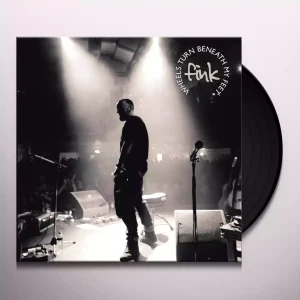 I just discovered the English singer songwriter Fin Greenall, known by his nickname Fink. The acoustic guitar opening on the track Wheels on the Perfect Darkness album drew me into total immersion of palpable three-dimensional sound. I know what an acoustic guitar sounds like in person, and the MU2 presents it in full acoustic glory.
I just discovered the English singer songwriter Fin Greenall, known by his nickname Fink. The acoustic guitar opening on the track Wheels on the Perfect Darkness album drew me into total immersion of palpable three-dimensional sound. I know what an acoustic guitar sounds like in person, and the MU2 presents it in full acoustic glory.
Another track on this album, Honesty, demonstrates the MU2’s ability to reproduce full bass. The kick drum playing in the background has a subtle, powerful presence, and his vocals are clear and realistic. The highs are the easiest to hear what the MU2 is doing better than other DACs. There is purity in the sound with the MU2 where, for lack of a better term, I hear a glare or harshness in the highs from other DACs.
How quiet is the MU2? The MU2 is so quiet I could, for the first time, hear a second voice on the song Appaloosa Bones from the album, also titled Appaloosa Bones, by Gregory Alan Isakov. I had no idea there was a backup singer gently adding to the refrain of the song. With the MU2, I could hear the quiet between notes, and his voice was clear, holographic, and, again, real sounding.
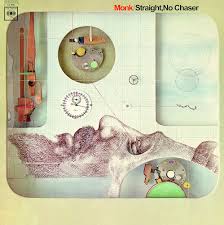 Thelonious Monk is my favorite composer and musician. Listening to Straight No Chaser off the album “Straight No Chaser,” there is again a genuine body to the sound. The piano keys produce a fully transparent and present sound. I hear Monk in a way I have never heard in my other systems. There is a thickness to the sound of the piano. I can hear the piano soundboard stop resonating with clarity when he lifts his foot off the pedals at the end of the track. This is precisely what I heard in the room with a real piano. The MU2 fully connects me to the music.
Thelonious Monk is my favorite composer and musician. Listening to Straight No Chaser off the album “Straight No Chaser,” there is again a genuine body to the sound. The piano keys produce a fully transparent and present sound. I hear Monk in a way I have never heard in my other systems. There is a thickness to the sound of the piano. I can hear the piano soundboard stop resonating with clarity when he lifts his foot off the pedals at the end of the track. This is precisely what I heard in the room with a real piano. The MU2 fully connects me to the music.
Conclusion:
If you can live with a one-box solution, I suggest you listen to the MU2. It is expensive, but considering the price of a streamer, preamp, DAC, and cables, it makes audio sense. My other preamp, streamer, and DAC system cost approximately $11K before a digital cable connects the streamer to the DAC. The MU2 gives you top-quality components and a sound worth the cost.


Specifications:
Price: $17,500
Website: www.grimmaudio.com
Interview Grimm Audio
https://youtu.be/E4hy4a91Ov8?si=VzDbVBQUpoO0KTEJ
https://youtu.be/y2H32t-du14?si=GMrgWSTEs9xs_8it
John’s Associated Equipment
SPL Performer 1200 SS amplifier
Audio Note Kit EL 34 amplifier
Pine Tree Audio ISO-Quad interconnects
Pine Tree Audio Rainbow speaker cables
Devore Fidelity O/96 speakers.
One thought on "Grimm MU2 music player by John Hoffman"
Leave a Reply
Stereo Times Masthead
Publisher/Founder
Clement Perry
Editor
Dave Thomas
Senior Editors
Frank Alles, Mike Girardi, Russell Lichter, Terry London, Moreno Mitchell, Paul Szabady, Bill Wells, Mike Wright, and Stephen Yan,
Current Contributors
David Abramson, Tim Barrall, Dave Allison, Ron Cook, Lewis Dardick, John Hoffman, Dan Secula, Don Shaulis, Greg Simmons, Eric Teh, Greg Voth, Richard Willie, Ed Van Winkle, Rob Dockery, Richard Doron, and Daveed Turek
Site Management Clement Perry
Ad Designer: Martin Perry




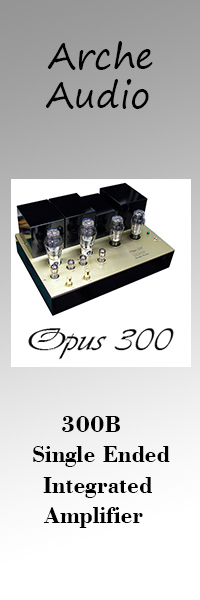
I am interested in whether you listened to the cited music via streaming or CD or — ideally — the same tracks via both. I have a Bricasti M21 with its internal music renderer (i.e., streamer) and found that, sonically, playing CDs via Bricasti’s M19 SACD transport and its proprietary I2S connection to the M21 is superior to its [internal] streaming. Consequently, I recently purchased a Lumin U2 streamer, which I connect via USB to the M21. Now, both sources provide equally listenable music.